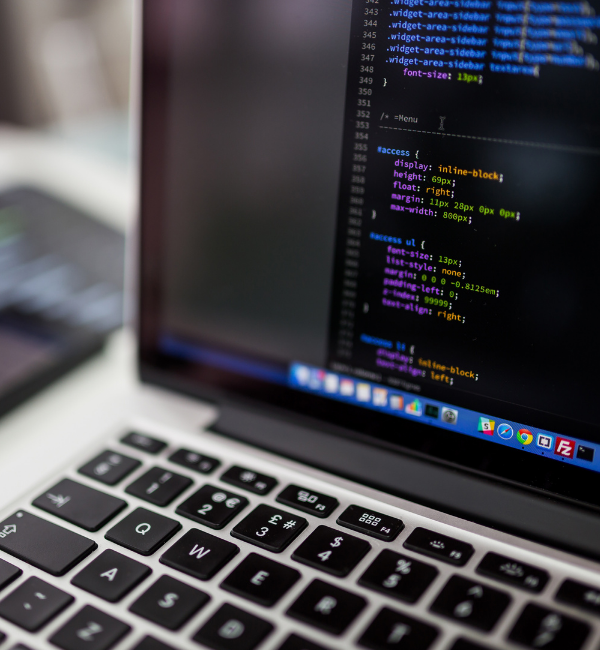Coding Club


Learners explore some foundational computer programming concepts and develop computational thinks skills by participating in three weeks of hands-on coding activities, via Scratch, for one-hour sessions, where each session builds off the previous session.
Credit: This activity was created by McGill University.
What You Need
- Computer access with a reliable internet connection
- Scratch website
- Coding Club PowerPoint presentation:
- Coding Club activity overview:
Note: This activity can be hosted in a virtual setting, or in-person, provided participants can view the facilitator’s screen.
Safety Notes
Ensure you are familiar with Let's Talk Science's precautions with respect to safe delivery of outreach to youth.
What To Do
Pre-activity:
- Facilitator to review and become comfortable with the content in the Coding Club PowerPoint presentation.
- Facilitator to edit and update the yellow highlighted sections in the Coding Club PowerPoint presentation (site feature and Land Acknowledgement).
Activity:
- Ask the educator to split learners into pairs, if working in teams.
- Host the weekly session, per Coding Club PowerPoint presentation, coaching learners while they complete each identified task, via Scratch.
Discovery
Learners will explore some foundational computer programming concepts and develop computational thinks skills, including pattern recognition, repetition (loops), sequences, conditional statements, and algorithmic thinking, by creating unique characters, backgrounds, and games using Scratch. Sequences involve tasks which are repeated and/or only occur under certain conditions. The steps in an algorithm always follow a sequence. Simple, linear sequencing is one of the first concepts learned when coding, which learners achieve through completing this activity! Learners also further develop critical thinking, testing and evaluation skills through this activity.
As technology advances, it is more important than ever that people contribute to the digital world. Building computational thinking skills, such as decomposition, and strengthening computational thinking concepts, pattern recognition, repetition (loops), sequences, conditional statements, and algorithmic thinking, better prepares learners for the real and the digital world. By asking questions and then adapting to the answers, learners can ask more precise questions to solve the problem.
The commands created by learners followed a sequence. A sequence can have repeated tasks or tasks that only happen in particular situations. Learners gave instructions to perform an action multiple times. This kind of repetition happens a lot in computer programming. Instead of writing out that step multiple times, it can be set up so that it automatically repeats (loops) a certain number of times.
Critical thinking involves addressing complex problems by interpreting information to make informed judgments. Being able to think critically is an important skill to have that helps learners become constructive citizens and interact with the world in meaningful ways.
- Encourage learners to embrace their new skills and independently explore Scratch further and create their own code to generate new characters, games, etc.
- Explore other Let’s Talk Science Scratch-related, hands-on-activities:
What's Happening?
Learners will explore some foundational computer programming concepts and develop computational thinks skills, including pattern recognition, repetition (loops), sequences, conditional statements, and algorithmic thinking, by creating unique characters, backgrounds, and games using Scratch. Sequences involve tasks which are repeated and/or only occur under certain conditions. The steps in an algorithm always follow a sequence. Simple, linear sequencing is one of the first concepts learned when coding, which learners achieve through completing this activity! Learners also further develop critical thinking, testing and evaluation skills through this activity.
Why Does It Matter?
As technology advances, it is more important than ever that people contribute to the digital world. Building computational thinking skills, such as decomposition, and strengthening computational thinking concepts, pattern recognition, repetition (loops), sequences, conditional statements, and algorithmic thinking, better prepares learners for the real and the digital world. By asking questions and then adapting to the answers, learners can ask more precise questions to solve the problem.
The commands created by learners followed a sequence. A sequence can have repeated tasks or tasks that only happen in particular situations. Learners gave instructions to perform an action multiple times. This kind of repetition happens a lot in computer programming. Instead of writing out that step multiple times, it can be set up so that it automatically repeats (loops) a certain number of times.
Critical thinking involves addressing complex problems by interpreting information to make informed judgments. Being able to think critically is an important skill to have that helps learners become constructive citizens and interact with the world in meaningful ways.
Investigate Further
- Encourage learners to embrace their new skills and independently explore Scratch further and create their own code to generate new characters, games, etc.
- Explore other Let’s Talk Science Scratch-related, hands-on-activities: